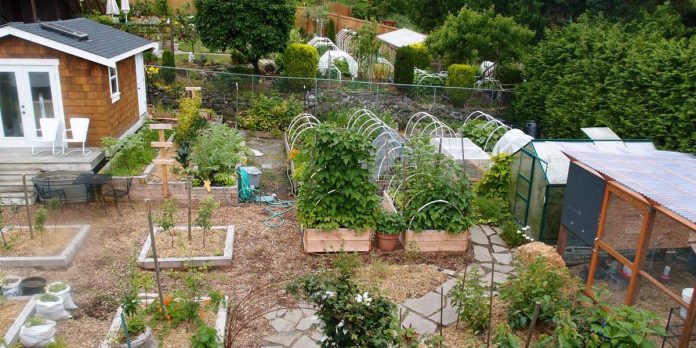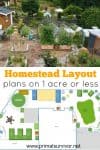You want to start homesteading but don’t have a lot of land? Lack of land is one of the biggest excuses I hear from people who’d like to become more self-sufficient but don’t get started.
I hear you because I also used to believe that homesteading required tons of land! That’s why I want to share these tiny homestead layouts with you. The homestead layout plans are 1 acre or under and help their owners achieve a considerable degree of self-sufficiency and even some income!
Read: What is homesteading?
1/3 Acre Homestead Layout
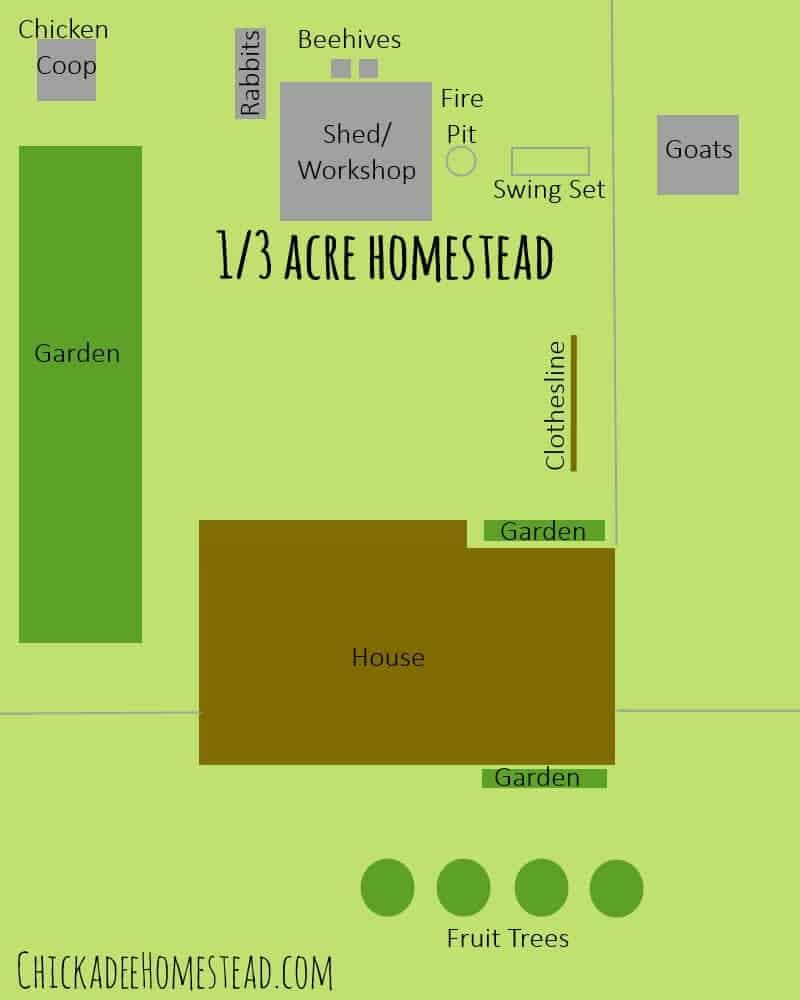
This homestead layout plan is from Lindsey at Chickadeehomestead.com. Yes, it is only 1/3 of an acre – but that is enough for the family to raise and grow 80% of their food and most of their personal care items!
How have they done it? Focusing on food sources that don’t take up a lot of space, for example, raising chickens and rabbits instead of cattle and sheep.
1/8 Acre Urban Homestead Layout
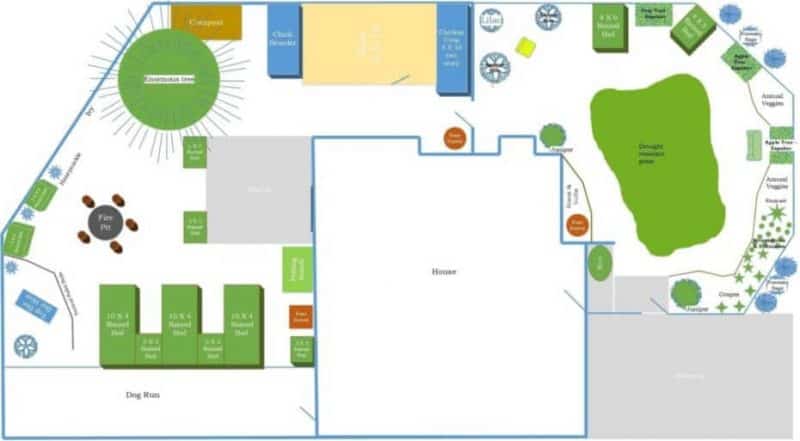
Melissa at Evergrowingfarm.com has a truly impressive homestead layout – particularly because it is an urban farm.
What started as a “postage stamp of dead earth” amongst busy streets soon became an oasis. There are:
- 165 sq. feet raised bed garden
- 260 sq. feet ground-level growing space
- Strawbale compost pile
- A dog run
- Chicken coop and two brooders
- Rainwater barrels that can hold 175 gallons
- 5 chickens (which later grew to 20 chickens)
How did they do it? It was all about smart practices like crop rotation and utilizing the space smartly. You can learn more about the urban homestead here.
½ Acre Homestead Layout
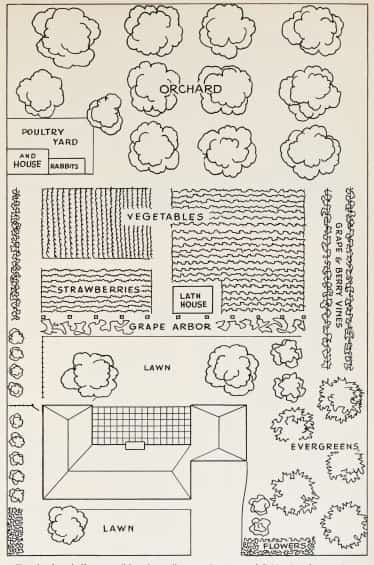
This ½ acre homestead layout comes from a 1950s brochure made by the California Agricultural Extension Service.
You’ll see that the home and living area haven’t been significantly reduced (you could put more garden space or chickens where those evergreens are!). Yet, there is still a lot of food to be reaped from the orchard and garden. Like with the first tiny homestead, rabbits and chickens have been chosen for their efficiency.
Other Tiny Homestead Layout Plans
The owners of these websites didn’t get back to me with permission to share their images. So, you’ll have to click on the website to see the tiny homestead layouts yourself. It just shows that there are many ways to improve your self-sufficiency through homesteading, even in a small space!
The Myth that You Need a Lot of Land to Be Self-Sufficient
Before starting my homesteading journey, I thought I’d need a lot of land to achieve any degree of self-sufficiency. Then I started researching homesteading and visiting homesteads too. I was amazed at what was being done — even on the rooftops of city homes, in apartments, and in tiny backyards.
It is easy to understand why people think you need a lot of space to be self-sufficient. Giant CAFO farms and huge mono-crops dominate our country’s food production.
We are also skewed by history. In the 1800s, the minimum homestead parcel the government gave out was 320 acres. (Source)
While it certainly helps to have a lot of land, it isn’t always necessary. Modern farming techniques have made it possible to raise much more food in less space, and good planning and homestead design can go a long way.
Here’s an example of what can be done on a small homestead:
- Singing Frogs Farm: This homestead is larger at 3 harvested acres, but you’d still be surprised to learn that they generate over $100,000 per acre. The key is using sustainable methods to keep their topsoil healthy.
Where to Homestead
See here for the best states for homesteading.
Some Great Resources for Tiny Homesteads
I’m not going to lie and say that it is easy to become self-sufficient on a tiny homestead. There is a high learning curve! But, if you stick with it, you’ll be rewarded with your own food and maybe even have a medicinal garden and homemade cleaning products.
I highly recommend reading some homesteading books to get you started on your journey. Here are some of my favorites with Amazon links:
- How to Grow More Vegetables: This book discusses bio-intensive gardening methods that produce huge yields on small garden plots.
- The Backyard Homestead: This book deals with all of the logistics of planning your homestead, from where to put the chicken coops to how to set up the garden. I love that it focuses on small spaces.
- Maximizing Your Mini Farm – Self Sufficiency on ¼ Acre: There is a lot of excellent information in this book, such as soil fertility techniques, trellising, heated water platforms, and planting guides. I also like that Brett talks about getting the most out of specific veggies like carrots and peppers. You’ll also find info like making vinegar and cheese.
- Backyard Farming on an Acre (More or Less): Here is a book for people just starting homesteading. It begins with advice about purchasing land and takes you through garden planning and skills backyard farmers need to know.
Are you homesteading? How much land do you have?

